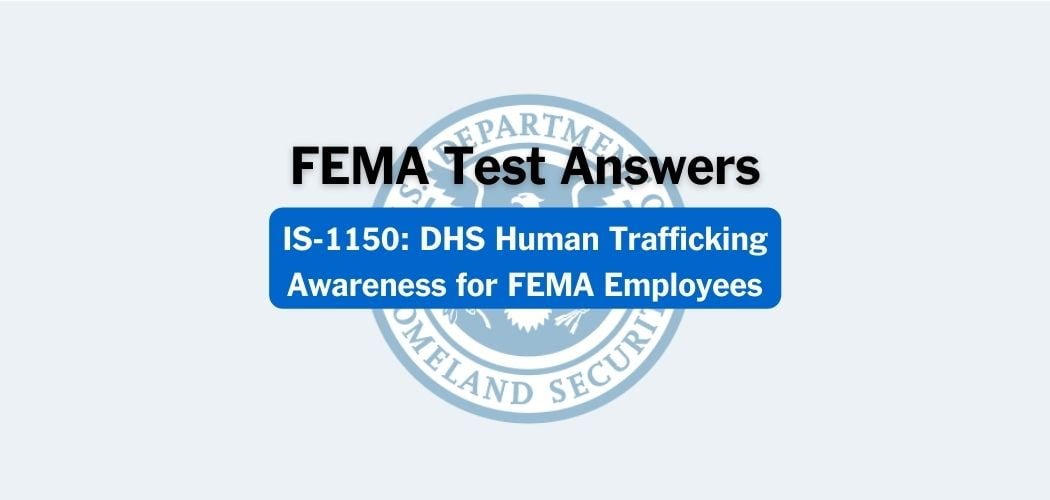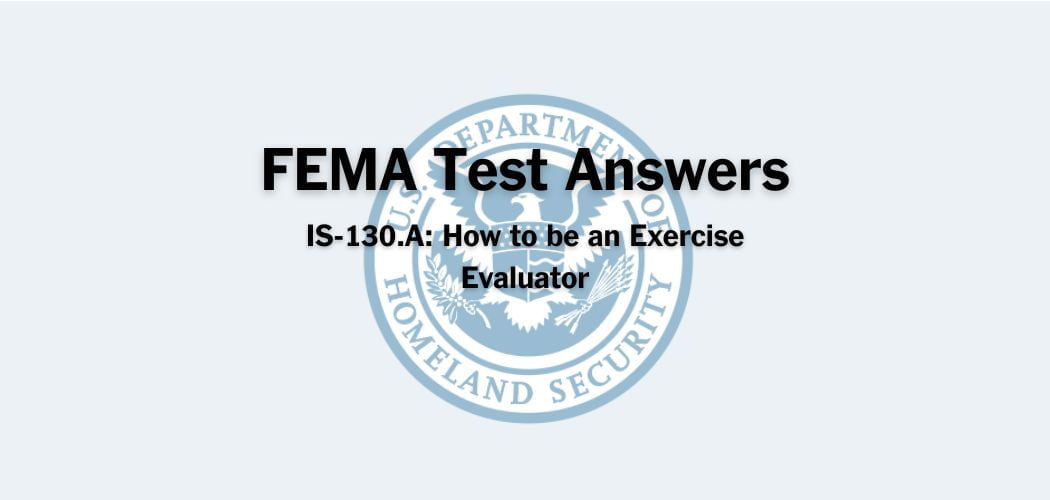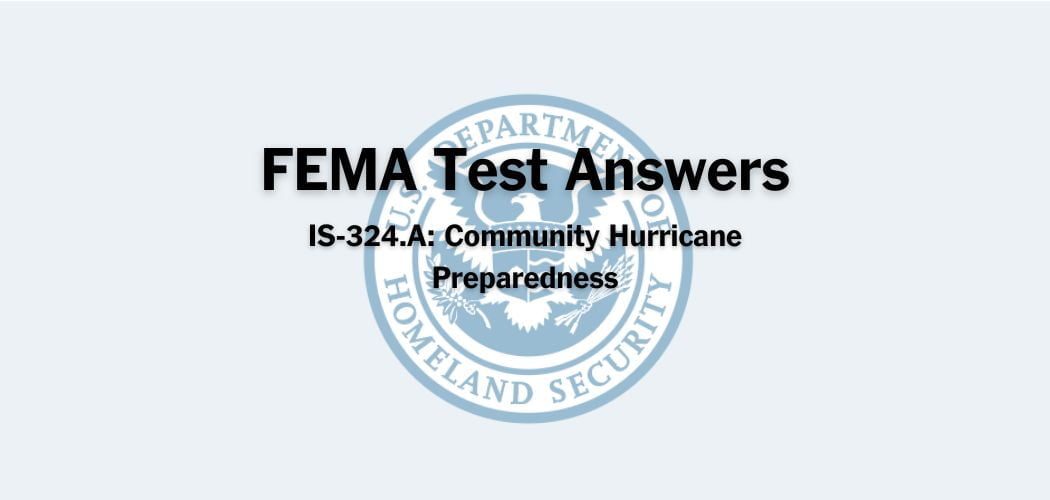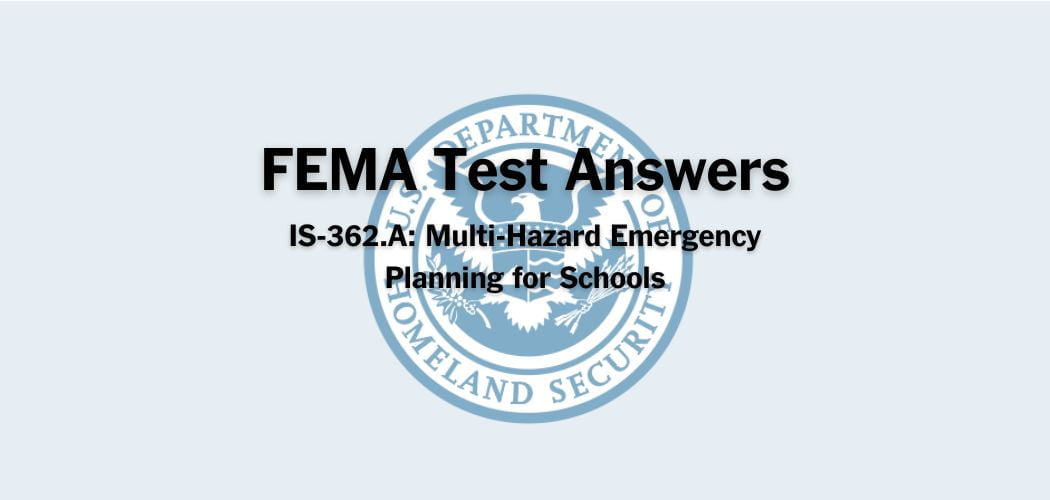Overview: The FEMA IS-366.A course was published on 12/9/2015 to provide guidance for Emergency Managers and implementers of children’s programs about meeting the unique needs that arise among children as a result of a disaster or emergency.
Much of the information in this course is based upon a document titled “The Unique Needs of Children in Emergencies: A Guide for the Inclusion of Children in Emergency Operations Plans,” published by Save the Children.
At the conclusion of this FEMA IS-366.A course, you should be able to create, update, or revise an Emergency Operations Plan for your community or organization to effectively address the unique needs of children in disasters.
FEMA IS-366.A test answers
Each time this test is loaded, you will receive a unique set of questions and answers. The test questions are scrambled to protect the integrity of the exam.
Question 1. Which two statements best describe why it is important to understand the demographic of the community when conducting mitigation planning?
A. Mitigation is not affected by the demographic makeup and social conditions of the community.
B. Understanding demographic information will help you identify which mitigation measures you should use for each type of disaster.
C. Using geographic information systems allows you to see where households with children are located so you can plan for their needs.
D. ow-to-moderate income neighborhoods often experience greater damage in disasters because of high-risk areas and low-cost construction.
E. Both C. and D.✅
Question 2. True or False: Families are more likely to participate in community activities when they feel connected to the community. In a disaster, this may translate into increased willingness to follow urgent community directives such as when to evacuate or where to shelter in place.
A. TRUE✅
B. FALSE
Question 3. The school custodian is responsible for carrying which of the following during an evacuation/relocation and lockdown:
A. School attendance rosters
B. The school master key
C. The principal’s cell phone or walkie-talky
D. School floor plan including shut-off valves for all utilities✅
Question 4. All of the following areas are considered high-risk and should be protected by high-security locks and an alarm EXCEPT:
A. Music Room✅
B. Office
C. Library
D. Cafeteria
Question 5. True or False: Hazard mitigation planning is generally a linear process.
A. TRUE
B. FALSE✅
Question 6. Which one of the following people is the BEST choice to include in a community’s Emergency Operations Plan, to act as a liaison with the public health sector?
A. child care provider
B. Child social services
C. school counselor
D. school nurse✅
Question 7. Which one of the following would be the BEST mitigation strategy for a community that is prone to frequent flooding?
A. Installing storm shutters
B. Installing hurricane clamps
C. Constructing safe rooms
D. Elevating homes✅
Question 8. Children can become separated from their families during a disaster because:
A. They were on a school trip out of town when the event took place.
B. They were being treated at a hospital when the event took place.
C. They become separated from their parents during the chaos of the evacuation.
D. All of the above✅
Question 9. Which one of the following critical components of a child’s world provides the FIRST means of accounting for children in disasters?
A. Childcare providers
B. Child social services
C. Families✅
D. Schools
Question 10. Starting a maintenance and security safety checklist may be helpful in addressing the important balance between sufficient building security and:
A. a disaster-proof building
B. making sure all the lights work properly
C. a great outdoor play area for the students
D. providing students with a healthy, nurturing, normal environment✅
Question 11. The school has a well-developed network of _____ to which students can be referred to help prevent violence and promote mental health.
A. Service Providers✅
B. Insurance Companies
C. Lawyers and advocates
D. Law Enforcement Officials
Question 12. Which of the following is NOT a question that should be addressed by a school’s or childcare facility’s emergency operations plan?
A. What personal items can be taken during the evacuation?✅
B. Who can direct an evacuation?
C. What signal will be given to notify everyone in the facility?
D. What will the children be told?
Question 13. What information is needed about a location in order to include it in a GIS?
A. Altitude
B. Street address
C. Closest Major Intersection
D. Latitude and longitude✅
Question 14. According to the maintenance and security safety checklist, which TWO of the following elements provide the best building security:
A. total blackout
B. interior lights on in the hallways
C. adequate exterior directional lighting
D. lights above all entrances
E. Both A & C✅
Question 15. Which one is NOT a factor that leads to resilience among children faced with disaster?
A. Provide opportunities for children to participate in school, cultural, faith-based, or extracurricular activities.
B. Allow children to watch as much television as possible.✅
C. Include children in recovery activities.
D. Allow children to return to normal activities as soon as possible, to connect them with their peers and caregivers.
Question 16. During which step of the hazard mitigation planning process should the planning team be established?
A. Develop a mitigation plan
B. Implement the plan and monitor the progress
C. Assess risks
D. Organize resources✅
Question 17. Which one of the following is most likely NOT a step that can be taken to reduce the impact of different types of threats and disasters?
A. Be sure key staff knows how to use a fire extinguisher properly and other staff or family members are trained in proper use.
B. Regularly monitor for possible threats and hazards.
C. Assign each student a partner to hold each other’s hand during a disaster.✅
D. Provide one or more carbon monoxide detectors, as well as regular maintenance and checks of smoke detectors.
Question 18. Which of the following is the main priority for helping children return to their normal routines and education?
A. Restoration of community services and attractions such as museums and amusement parks.
B. Provision of temporary housing, schools, and childcare facilities where needed.✅
C. Provision of water, food, and toys for children
D. Provide jobs for parents and teachers
Question 19. Effective prevention actions along with effective training and exercises can improve a school or childcare facility’s ability to protect, mitigate, respond, and _______ emergencies.
A. deter
B. avoid
C. initiate
D. recover from✅
Question 20. In order to prevent violence and promote mental health and well-being, schools and childcare facilities may want to review whether students have access to the following programs (select all that apply):
A. conflict resolution programs
B. programs that assist in developing anger management skill
C. bilingual and multicultural resources
D. prevention of harassment needs to be emphasized school-wide
E. All of the above✅
Question 21. All following elements have been identified as important to supporting the school’s level of involvement with law enforcement EXCEPT:
A. The school has developed and maintained an effective relationship with law enforcement.
B. The school reports incidents of crime and violence to law enforcement officials.
C. The school and local law enforcement have developed a memorandum of agreement, (MOA), defining the roles and responsibilities of both.
D. The school threatens children with punishment from law enforcement officials for even the most minor infractions.✅
Question 22. Select all the ways a parent can help a child build resilience through communication:
A. Calmly and firmly explain the situation, including what will happen next.
B. Use positive behavior and language around children.
C. Encourage children to ask questions and listen when they talk.
D. Try to answer questions and address concerns with concrete, easy-to-follow information.
E. All of the above✅
Question 23. Which one of the following is the MOST important step you can take to provide for the physical safety and emotional stability of children in disasters?
A. Strengthen children’s coping skills.
B. Give children extra time and attention.
C. Educate children about disasters.
D. Preserve family unity.✅
Question 24. When a disaster strikes and people are evacuated to shelters, it is important to consider not only their physical needs, such as a roof over their heads and a place to sleep, but also:
A. their communications needs
B. their mental and emotional needs✅
C. their hygiene needs
D. their financial needs
Question 25. Why did emergency management officials have to change their policy about evacuating citizens with special needs separately from those without special needs?
A. It was not necessary to evacuate people with special needs separately.
B. Evacuating citizens with special needs separately could lead to the separation of families.✅
C. People with special needs felt left out when they were evacuated separately.
D. People could have viewed the policy as unfair.



